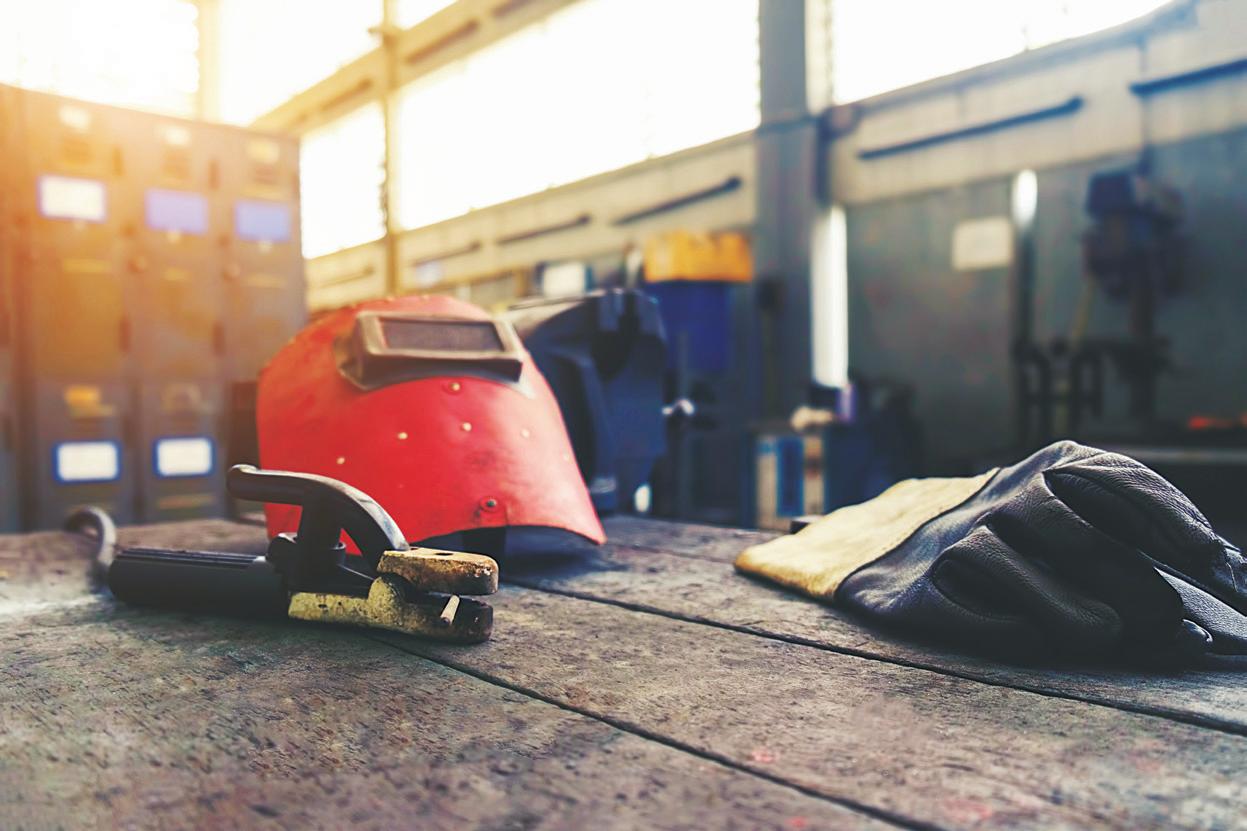
3 minute read
Comment
from MM Aug 2019
by Prime Group
GEOFF CRITTENDEN – CEO, Weld Australia Comment
Finding and retaining skilled workers is front of mind for manufacturing industry business owners and operators.
THERE is widespread evidence that Australia’s manufacturing sector is growing. According to the Australian Industry Group’s (Ai Group) Australian Performance of Manufacturing Index (Australian PMI), the sector experienced a 26-month long run of uninterrupted expansion from 2016 to 2018. More recently, the Australian PMI rose by 3.8 points to 54.8 in April, indicating even faster growth across the manufacturing sector, with production, sales, exports and new orders all gaining ground.
However, industry participants continue to cite a critical constraint – workforce capability and availability. Finding and retaining skilled workers is front of mind for manufacturing industry business owners and operators, as is the maintaining currency of skills and knowledge.
Australia requires a significant increase in skilled, qualified trades workers to meet future demand on major projects in industries as diverse as defence, shipbuilding, aerospace, infrastructure, rolling stock, and resources.
According to a recent employment outlook survey in Australia conducted by the ManpowerGroup, skilled trades workers (such as electricians and welders), engineers (electrical, civil and mechanical) and technicians are scarce. In fact, 34 per cent of Australian employers admit that filling job vacancies is increasingly difficult, mainly due to lack of applicants (25 per cent), lack of skills (21 per cent), and lack of experience (19 per cent). This is further compounded by the fact that approximately 30 per cent of Australia’s existing welding workforce is aged over 45 years. This heavy proportion of older skilled trade workers, particularly welders, puts into focus the looming issues that industrial sectors are likely to face when baby boomers finally reach retirement age – welding positions will simply become impossible to fill, particularly given the projected increased demand. Our lack of skilled workers combined with an aging workforce demographic is exacerbated by strong employment growth. Recent labour force data from the Australian Bureau of Statistics (ABS) indicates that employment growth among manufacturers surged by 86,000 over the past 12 months – the highest growth rate of any

Australian industry. This is closely followed by both the mining and construction industries. There is also further projected employment growth over the next five years for structural steel and welding trade workers.
This employment growth rate is not surprising given some of the major projects on the horizon, from the federal government’s $90 billion Naval Shipbuilding Program, through to major infrastructure projects such as the $12 billion Sydney Metro project, and the $5 billion Melbourne Airport Rail Link.
The skills shortage for these growing sectors is clearly reaching breaking point in Australia.
Having an appropriately sized, skilled, readily-available workforce at the right time is key to delivering these major projects. Developing this workforce presents a complex and long-term challenge – it requires a significant amount of individual training and company upskilling to meet global standards. Perhaps more importantly, it requires a shift in thinking and a focus on the skills that will be essential to the manufacturing industry of the future, such as automation, robotics, and advanced manufacturing processes.
Developing a skilled workforce presents a complex and long-term challenge.

Government, industry, and education providers all play a role in solving this complex, long-term challenge, and in attracting, skilling, and retaining workers.
This critical constraint of workforce capability and availability is the basis of the 2019 National Manufacturing Summit’s theme: “Skills for the Future”. Hosted by Weld Australia, the Summit will be held at The Australian Synchrotron in Melbourne on 21 and 22 August 2019.
The Summit gathers leading representatives from all major Australian manufacturing stakeholders – business, unions, universities, finance, suppliers, and government – to discuss the sector’s prospects, and identify promising, pragmatic policy measures designed to support an industrial turnaround. The 2019 Summit program will focus on how business, governments, industry bodies and the education system can work together to deliver actionable, practical solutions.
The Summit is a must-attend event for anyone with a vested interest in manufacturing, skills, training and apprenticeships.
For further information about the event, visit: https:// manufacturingsummit.com.au/






